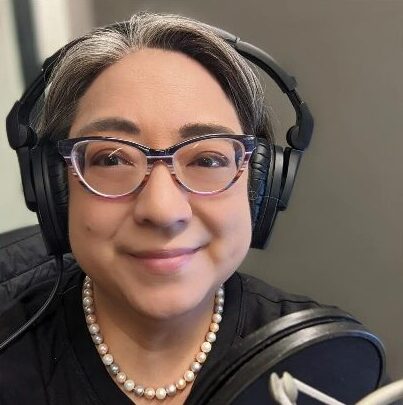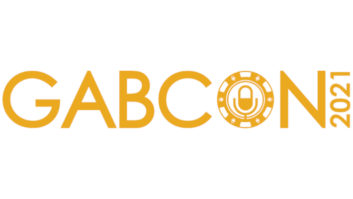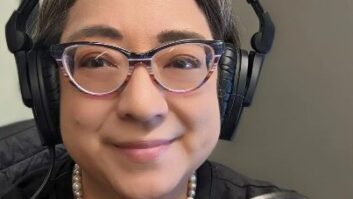Radio World’s “Guest Commentaries” section provides a platform for industry thought leaders and other readers to share their perspective on radio news, technological trends and more. If you’d like to contribute a commentary, or reply to an already published piece, send a submission to [email protected].
The author is CEO of the National Federation of Community Broadcasters, which has been serving the nation’s community radio stations since 1978. NFCB commentaries are featured regularly at Radio World.

The national and international news cycle continues to spin fast and, with Super Tuesday behind us, the election spin cycle is on hyper drive.
Staying on top of news and current events is one thing but, for many of us working in media, we find ourselves living in and out of a state of trauma — whether it is experienced directly (a mass shooting locally or the closing of the primary economic driver in your town) or indirectly (reporting on the impact of a mass shooting in another state or the impact of current international legislation to basic human rights).
You also may be dealing with the anxiety and dread of what misinformation or disinformation may lie ahead as we move toward election day in November.
But first, how is everyone doing? (I am taking a page from Elmo’s playbook when he broke the internet, but clearly we all needed someone to check in!)
I hope you are doing okay, and I hope this article provides you with tools to use to make sure you remain okay or get to being okay.
As the new CEO for the National Federation of Community Broadcasters (NFCB), not in my wildest dreams would I have thought that barely two months on the job, on the 6th anniversary of the Parkland school shooting, would there be a shooting at a community event that would hit close to home.
The news of the shooting at the Super Bowl celebration in Kansas City scrolled across the TV behind my laptop in the middle of a Zoom meeting. I shared the news with my colleagues in the meeting. We all shared a moment and shook our heads around the news of another mass shooting. Then shortly after, came the news that a DJ at KKFI, Lisa Lopez-Galvan, died because of her gunshot wounds. KKFI is a long-time member of NFCB.
This happened to one of our own, a community radio station DJ.
Different from other public media stations, the membership of NFCB is composed of more than 200 community radio stations, where 65% are rural stations, 69% have budget of under $100,000 and the delivery of broadcasted or on-demand music, news and storytelling primarily come from volunteers. Training and volunteer management have always been incredibly important at community radio stations since a volunteer may only come in once a month or once a week for an on-air shift.
With this recent traumatic event hitting so close to home, volunteer training around public safety took a very different turn and tone in some of our member stations right away, with some wanting to offer resources for dealing with trauma and grief.
Here is toolkit we provided the NFCB members, centering around the expertise compiled from the DART Center for Journalism & Trauma (below), as well as other organizations like the American Press Institute and Journalists of Color. These resources and tips work well across all departments.
- Handling the Death of a Colleague
- Trauma in the Newsroom for News Managers
- Resources for Covering Mass Shootings
- Resources for Reporting Traumatic Community Events
- Style Guide for Trauma-Informed Journalism
- Journalist Trauma Support Network
- Webinar: Prioritizing Mental Health in the Newsroom (from the “Journalist’s Resource”)
- Journalists of Color Resource Guide for Mental Health
- American Press Institute: Journalists and Mental Health
Beyond the resources above, conversations within our membership also turned to the upcoming Pledge Drive season — on-air fundraising was just around the corner. Localism remains the sweet spot in community media, and language is one of the most efficient ways to leverage and celebrate it. Community radio at its best works for, and from within, the communities they serve.
The question we were being asked next was “how does fundraising play out while dealing with a local tragedy?” So I reached out to a colleague and friend, Jay Clayton, individual giving advisor from Greater Public, to advise us on how to frame giving (during an on-air pledge drive or how to talk to donors) in the wake of tragedy. This conversation was inspired by, and especially for, stations close to the incident in Kansas City.
This is what Jay shared:
“For guidance on messaging, and when and how to use it and not use it, I suggest this:
It’s important for anything that’s said about [the shooting] to come off as genuine and not forced or opportunistic. For news stations, I think that means talking about it only around stories about related events. It’s tougher for music stations because [the event] isn’t likely to just come up in conversation. I don’t think stations beyond KKFI should feel compelled to talk about this or should. I understand people may want to, but I don’t think that’s a reason to bring it up.
“I would say the litmus test is that if it feels forced it probably is, and therefore let it go and don’t talk about it,” said Clayton.
When someone does talk about it, I think it makes sense to talk about it in the context of larger events [or trends] in the world, and how this one is hitting us very close to home. Example: ‘Lisa Lopez-Galvan, host of Taste of Tejano on Kansas City’s KKFI, lost her life in the shooting at the Kansas City Chiefs Super Bowl parade. We hold Lisa, her family and colleagues and community in our hearts.'”
If you want more information about how to frame talking about mass shooting events and what to consider, check out this episode from the podcast “Still Newton.” The 8th episode on this Peabody Award-nominated podcast was produced by WSHU Public Radio honoring the 10th anniversary of Sandy Hook. This episode talks about how to report on mass shooting situations like Sandy Hook and Robb Elementary. The episode features Bruce Shapiro from the DART Center.
The resources shared here can be used for any difficult situation. Grief and trauma affect all staff and volunteers at our stations. It is best to be prepared before a crisis hits.
Finally, remember the importance of stepping away from work. Right after the events in Kansas City, I was fortunate to have tickets to attend to attend a local concert of a folk-pop duo, The Oshima Brothers (often heard on Maine’s community radio station WERU) with my dear friend Pat. Their song, Love is Tall hit my heart with these lyrics:
“Life is short love is tall
Hands and heart
Learn how to hold it all”
Thank goodness for the healing benefits of friendship and live music! As we learn how to hold it all together at our stations with our volunteers and staff, make space to use these resources to keep us all safe. Create time to have conversations about training and public safety. Take care and be well.












